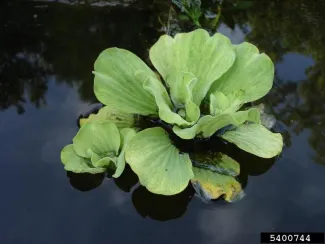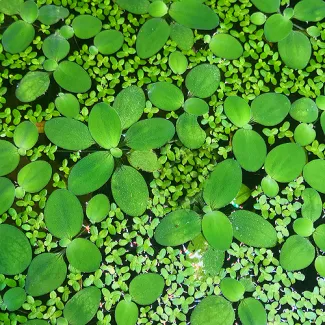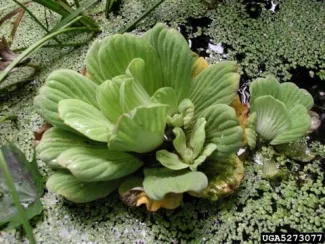Water Lettuce
The origin of water lettuce is unclear, but various sources suggest the plant is native to South America, Africa or the southeastern US. Water lettuce is considered one of the world’s worst weeds and considered invasive in the United States despite reports of it being native. This species can spread very rapidly and double in population size in a few weeks, so it can quickly cover the surface of invaded waters. Water lettuce is spread by producing seedlings and daughter rosettes. Rosettes can easily become caught on boat trailers or in live wells, which results in the introduction of the species to new bodies of water.
Was first observed in Oklahoma in 2020, in Sahoma Lake.
Impacts
Water lettuce can form large dense mats, which can go from shoreline to shoreline. These mats can decrease the species richness of native plants in the system, as well as alter dissolved oxygen levels which can lead to fish kills. Mats can hinder swimming, fishing, and boating.
Water lettuce is toxic if eaten in large quantities.
Identification Keys
- Free-floating, single plant or connected to others by stolons
- Roots numerous and feathery
- Resembles a head of lettuce
- Leaves are ovate, no stalk, deeply furrowed parallel veins, and wavy leaf margins



